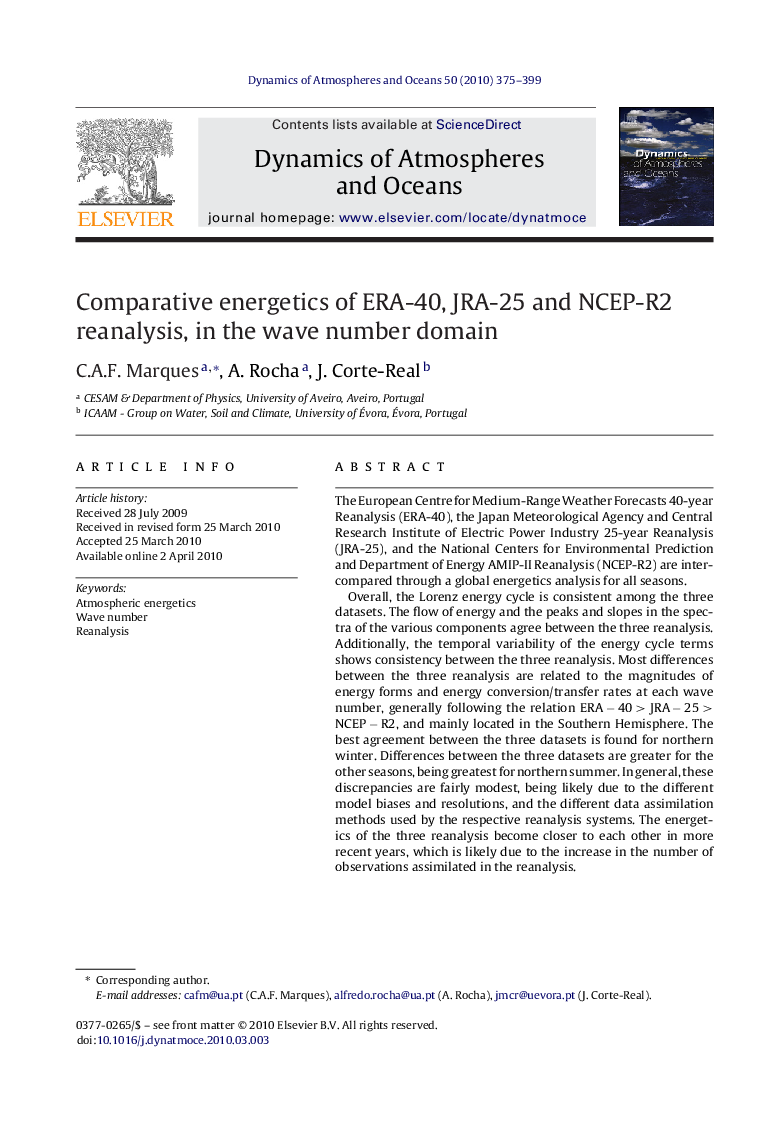| Article ID | Journal | Published Year | Pages | File Type |
|---|---|---|---|---|
| 4674126 | Dynamics of Atmospheres and Oceans | 2010 | 25 Pages |
The European Centre for Medium-Range Weather Forecasts 40-year Reanalysis (ERA-40), the Japan Meteorological Agency and Central Research Institute of Electric Power Industry 25-year Reanalysis (JRA-25), and the National Centers for Environmental Prediction and Department of Energy AMIP-II Reanalysis (NCEP-R2) are intercompared through a global energetics analysis for all seasons.Overall, the Lorenz energy cycle is consistent among the three datasets. The flow of energy and the peaks and slopes in the spectra of the various components agree between the three reanalysis. Additionally, the temporal variability of the energy cycle terms shows consistency between the three reanalysis. Most differences between the three reanalysis are related to the magnitudes of energy forms and energy conversion/transfer rates at each wave number, generally following the relation ERA−40>JRA−25>NCEP−R2ERA−40>JRA−25>NCEP−R2, and mainly located in the Southern Hemisphere. The best agreement between the three datasets is found for northern winter. Differences between the three datasets are greater for the other seasons, being greatest for northern summer. In general, these discrepancies are fairly modest, being likely due to the different model biases and resolutions, and the different data assimilation methods used by the respective reanalysis systems. The energetics of the three reanalysis become closer to each other in more recent years, which is likely due to the increase in the number of observations assimilated in the reanalysis.The NCEP-R2 reanalysis spectrum is smoother than those of ERA-40 and JRA-25, likely due to filtering and to its lower resolution model. The spectra show a rapid decrease for short waves in NCEP-R2 (n=36n=36) and ERA-40 (n=63n=63), as a consequence of filtering. The energy source in the nonlinear wave–wave interactions of kinetic energy, L(n)L(n), has a narrower spectral range in NCEP-R2 than in the other datasets. Energetics from the newer JRA-25 reanalysis is generally closer to that of ERA-40, with some exceptions as is the case of zonal–wave interactions of kinetic energy, M(n)M(n), for synoptic waves, or for eddy available potential energy, AEAE, in the lower troposphere, for which JRA-25 is closer to NCEP-R2.
